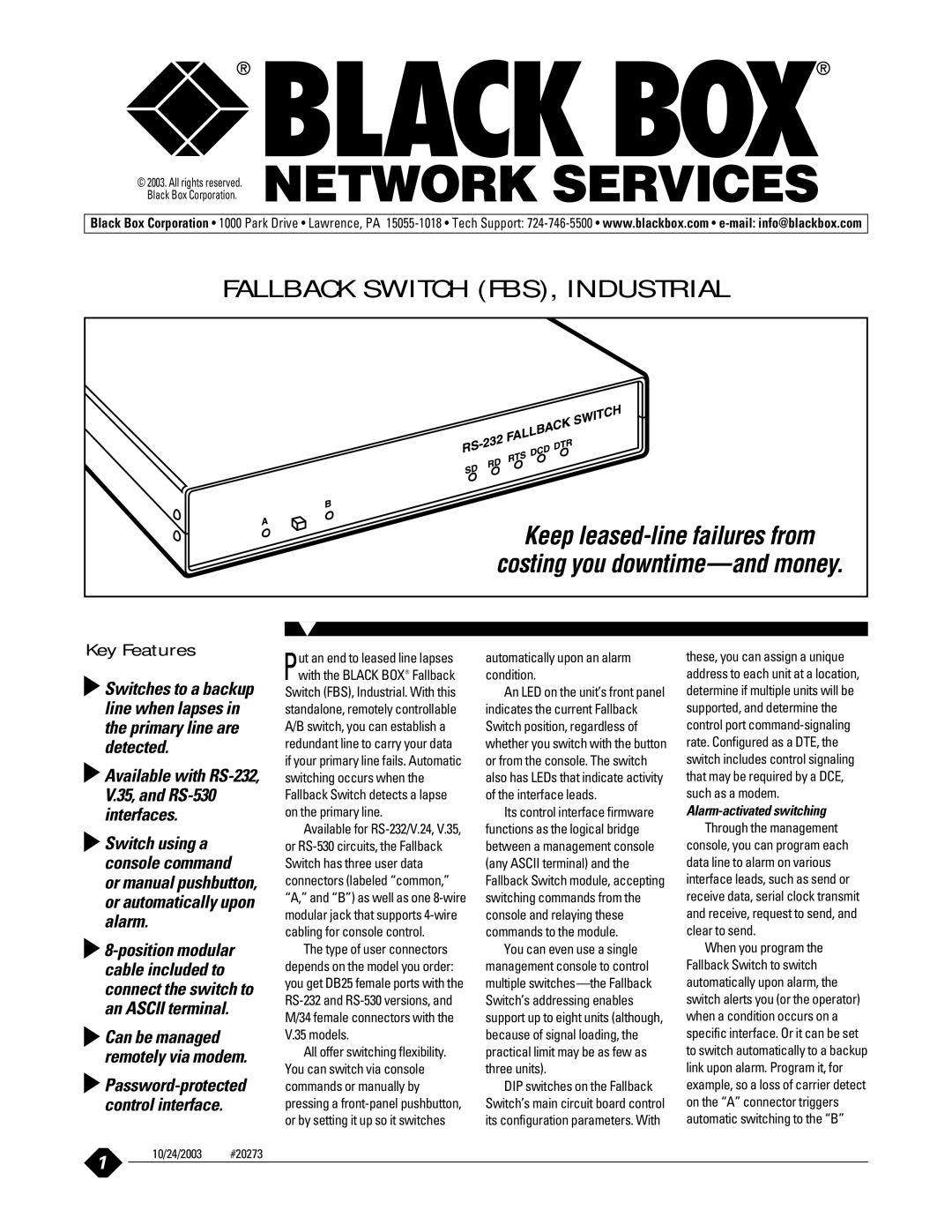
©2003. All rights reserved. Black Box Corporation.
Black Box Corporation • 1000 Park Drive • Lawrence, PA
FALLBACK SWITCH (FBS), INDUSTRIAL
Keep
Key Features
Switches to a backup line when lapses in the primary line are detected.
Available with RS-232, V.35, and RS-530 interfaces.
![]() Switch using a console command or manual pushbutton, or automatically upon alarm.
Switch using a console command or manual pushbutton, or automatically upon alarm.
![]()
 Can be managed remotely via modem.
Can be managed remotely via modem.
Password-protected control interface.
Put an end to leased line lapses with the BLACK BOX® Fallback Switch (FBS), Industrial. With this standalone, remotely controllable
A/B switch, you can establish a redundant line to carry your data if your primary line fails. Automatic switching occurs when the Fallback Switch detects a lapse on the primary line.
Available for
The type of user connectors depends on the model you order: you get DB25 female ports with the
All offer switching flexibility. You can switch via console commands or manually by pressing a
automatically upon an alarm condition.
An LED on the unit’s front panel indicates the current Fallback Switch position, regardless of whether you switch with the button or from the console. The switch also has LEDs that indicate activity of the interface leads.
Its control interface firmware functions as the logical bridge between a management console (any ASCII terminal) and the Fallback Switch module, accepting switching commands from the console and relaying these commands to the module.
You can even use a single management console to control multiple
DIP switches on the Fallback Switch’s main circuit board control its configuration parameters. With
these, you can assign a unique address to each unit at a location, determine if multiple units will be supported, and determine the control port
Alarm-activated switching
Through the management console, you can program each data line to alarm on various interface leads, such as send or receive data, serial clock transmit and receive, request to send, and clear to send.
When you program the Fallback Switch to switch automatically upon alarm, the switch alerts you (or the operator) when a condition occurs on a specific interface. Or it can be set to switch automatically to a backup link upon alarm. Program it, for example, so a loss of carrier detect on the “A” connector triggers automatic switching to the “B”
1 | 10/24/2003 | #20273 |
|
|
